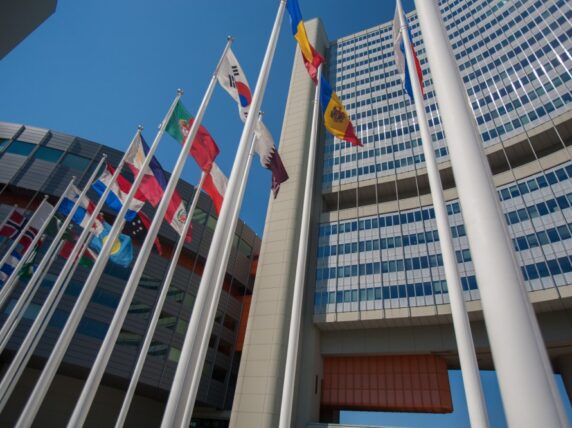4 lessons for building an agile NGO
In today’s rapidly shifting world, agile management is the only organisational philosophy that makes sense.
Take an NGO in Lebanon, a country already facing a crippling recession, a refugee crisis and Covid-19. Then 2,750 tons of ammonium nitrate detonated in a Beirut warehouse, wiping out the country’s main port. Faced with the sudden loss of a 120,000-ton-capacity structure used to house the country’s grain, one nutrition and refugee services organisation rerouted its supplies locally via the eight private mills in the country and is now using storage facilities in Tripoli.
The organisation acted within three days, including handling the notoriously difficult associated budget updates, programme changes and massive communication efforts required to contact donors, service users, HQs, partners and others.
INGOs have to be agile to cope with instability, such as conflict, economic crises or sudden drops in aid budgets. But the Covid-19 pandemic has caused a crisis for many of INGOs and MzN’s clients, calling into question how we work and how we finance that work.
Agile working can make organisations resilient enough to withstand unpredictability. Here are MzN’s top four lessons for building an agile non-profit organisation.
1. Think and analyse global, decide local
Agile working is about giving everyone the same rules, but allowing individuals to play the game differently. The traditional model of linear communication, where local operatives relay information back to HQ, is being replaced by the platform model that allows for devolved decision-making.
Such flexibility is carried by a rigorous set of performance targets and results that are put on a freely accessible platform for employees, trustees and even external partners, and local offices are given the power to choose how to meet these targets.
The flipside of this flexibility is accountability. One of our NGO clients has decided, under the current circumstances, that serving its communities in Lebanon means physically being in the office, while in Sudan – where the client had a relatively intact digital infrastructure – more can be achieved online and by working remotely.
“I knew we were going to be OK when the Lebanon and Sudan offices downloaded the same indicators, and two days later informed us of their new programming approaches. Which were completely different,” the client told us.
2. Your operating model is the key factor for continued impact
“Covid might go one day, but the speed of change will continue to grow. So the need for an operating model that can keep up will grow,” a leading UK-based NGO told me.
Often, when non-agile organisations move into a new country, they replicate their entire operating model once again: they undertake a needs assessment, register their organisation, open an office, attract donors and finally start programming.
Subscribe to our newsletter
Our weekly email newsletter, Network News, is an indispensable weekly digest of the latest updates on funding, jobs, resources, news and learning opportunities in the international development sector.
Get Network NewsThese days, this is too slow. Agile organisations don’t need to recreate this infrastructure, because much of it already exists on their operational platform. Why do you need a finance director in every country when financial information needs to be analysed and acted upon globally?
It’s the same with other backbone operations. Platform working allows agile operators to restructure – and scale up or down – much more frequently, without the financial (and emotional) pain this once caused.
3. Preparation overplanning
Ditching old-style “command-and-control” management means giving up the illusion that we can predict the future. Instead of placing faith in charismatic leaders to plot the way forward, agile means empowering teams to build their capacity to react to multiple futures.
As one of our clients said recently: “You build the muscle and you flex the muscle. You may not need it for every movement, but you need it to be there.” Sometimes this can mean investing in capacities that seem redundant in the short term – but true agility involves preparing for all scenarios. Those dormant capacities can spring to life when you least expect it.
Organisational analytics are key, requiring a real-time view of your people, programmes, finances and context. Capacity boosting is needed in areas such as digital communications, training, and fraud and error detection. You also need constant context analysis and strategy innovation (think “disrupt yourself management”).
In short, the world changes fast, and that means having a sharper set of eyes and ears in order to gauge external factors quicker and more efficiently. Agile means taking your organisation’s temperature – all the time.
4. Trust the data
I recently sat in on a call between a CEO and a 21-year-old programme analyst as they discussed how to approach the peace-building process in a west African country. The CEO, a Nobel prize nominee, gave a 10-minute speech, but the analyst stopped him: “That’s not right – at least not for here.” He went on to share a link to the programme dashboard, which included context analysis and internal performance metrics. The conversation turned in a completely new direction.
That conversation showed trust at play. All agile organisations must embrace trust – but that trust must be built on clearly defined data metrics visible to all on the platform. Everyone, from the country analyst up to the CEO, is held accountable by it – which doesn’t always play well with old-style “male, pale and stale” leadership used to wield unquestioned authority.
But to be fully agile, to avoid being held hostage by outdated methods and erroneous assumptions, central management must relinquish control and let the data notify it when things are going awry. That CEO did this because he knew the data was better than his instinct.
If you have any comments, thoughts, ideas or question on our insight above, please email Chris here.
Category
News & views



